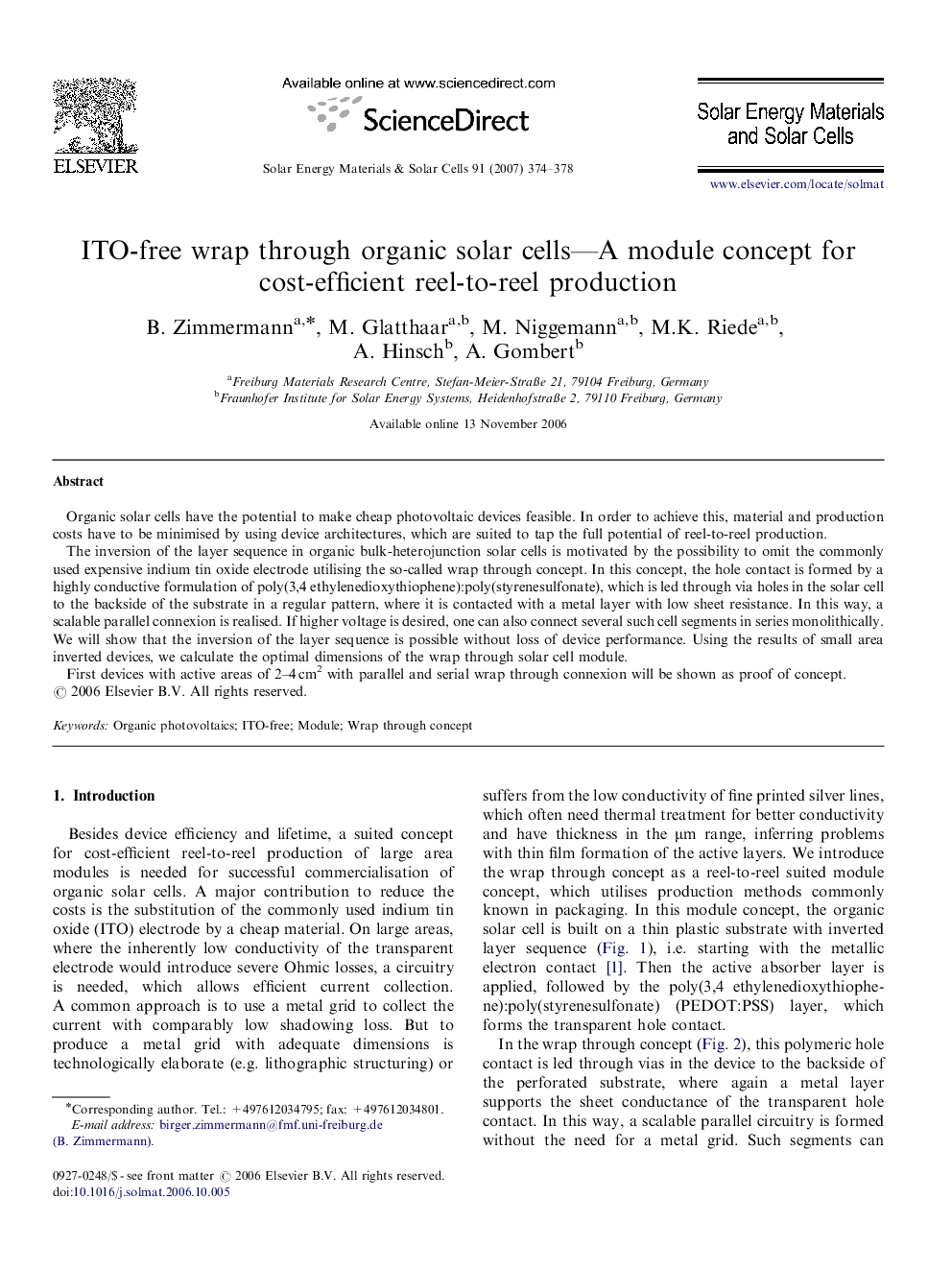| Article ID | Journal | Published Year | Pages | File Type |
|---|---|---|---|---|
| 80600 | Solar Energy Materials and Solar Cells | 2007 | 5 Pages |
Organic solar cells have the potential to make cheap photovoltaic devices feasible. In order to achieve this, material and production costs have to be minimised by using device architectures, which are suited to tap the full potential of reel-to-reel production.The inversion of the layer sequence in organic bulk-heterojunction solar cells is motivated by the possibility to omit the commonly used expensive indium tin oxide electrode utilising the so-called wrap through concept. In this concept, the hole contact is formed by a highly conductive formulation of poly(3,4 ethylenedioxythiophene):poly(styrenesulfonate), which is led through via holes in the solar cell to the backside of the substrate in a regular pattern, where it is contacted with a metal layer with low sheet resistance. In this way, a scalable parallel connexion is realised. If higher voltage is desired, one can also connect several such cell segments in series monolithically. We will show that the inversion of the layer sequence is possible without loss of device performance. Using the results of small area inverted devices, we calculate the optimal dimensions of the wrap through solar cell module.First devices with active areas of 2–4 cm2 with parallel and serial wrap through connexion will be shown as proof of concept.
